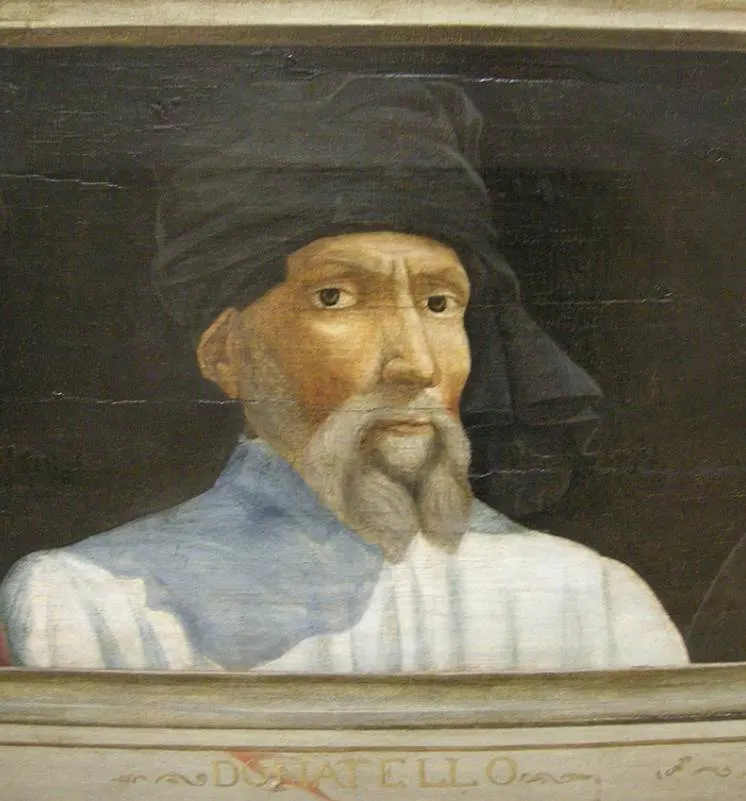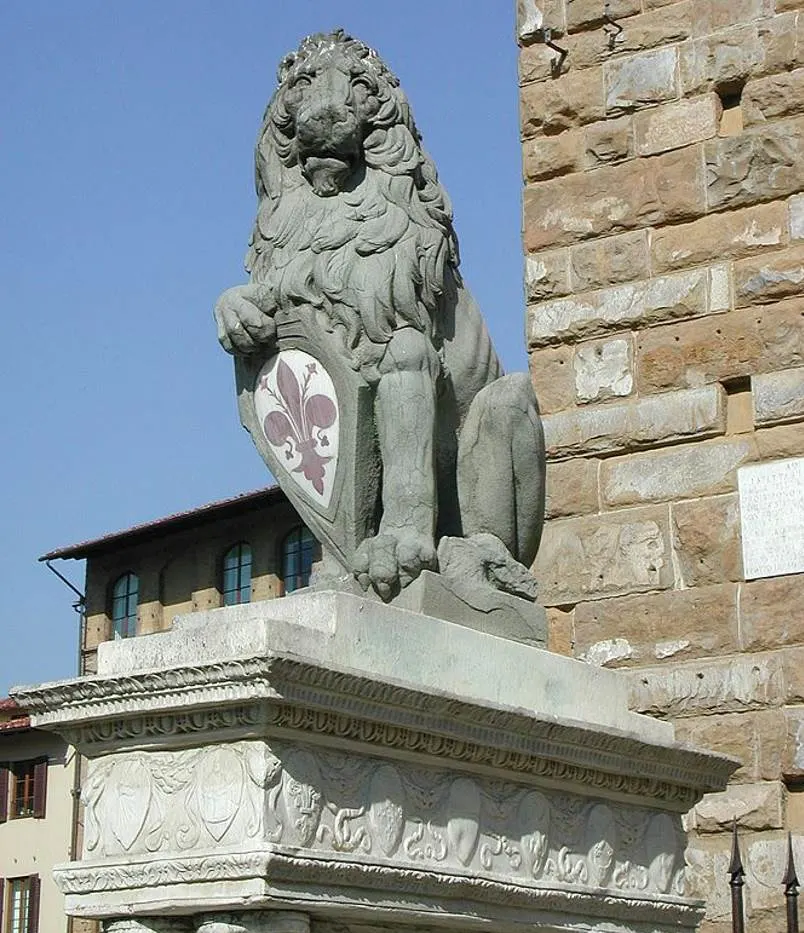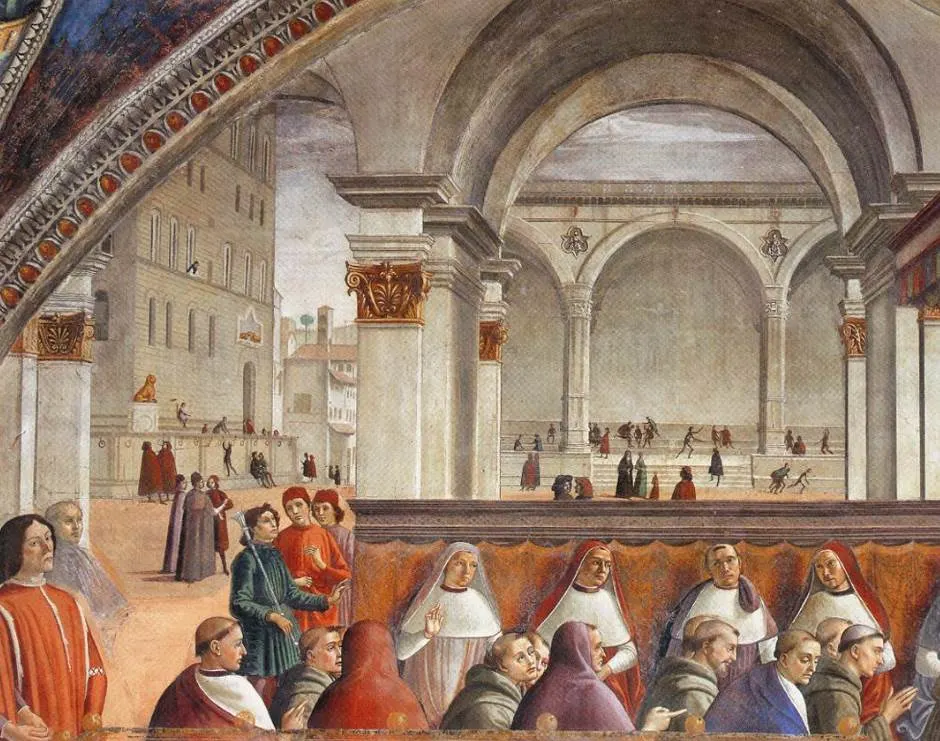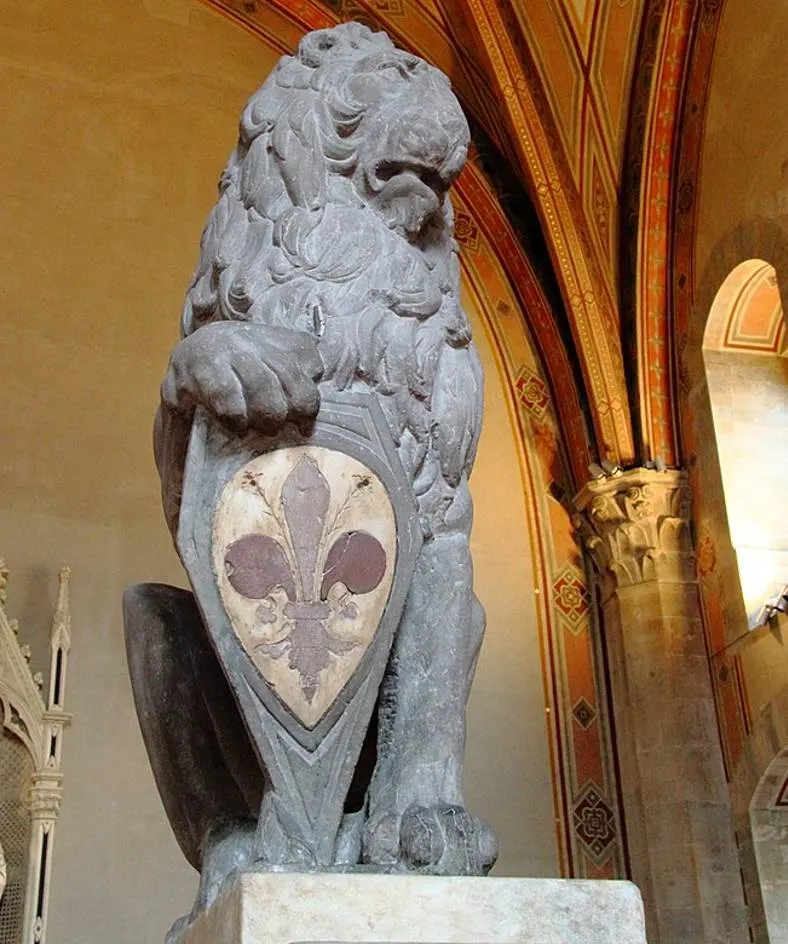The Republic of Florence was a powerful state that was established in 1115 and ended up being absorbed by the Grand Duchy of Tuscany in 1569.
It was centered around the largest city in Tuscany, Florence, the cultural heart of Central Italy in which some of the most renowned Renaissance artists in history emerged.
Yes, this was the birthplace of the Renaissance and the city still breathes the rich cultural history.
In the heart of the city, you can find a replica of a sculpture by Donatello, one of the leading Renaissance sculptors of the 15th century.
In this article, you’ll discover some of the most interesting facts about Marzocco, a remarkable Reniassance sculpture for several reasons.
1. The sculpture was completed at the height of Donatello’s career
Donato di Niccolò di Betto Bardi (1386-1466), better known by his nickname “Donatello,” was one of the most influential sculptors of the 15th century.
He is credited with developing the Renaissance style of sculpture and also a revolutionary new type of bas-reliefs. He integrated naturalism into his works which distinguished him from Gothic artists of previous centuries.
He was born and raised in Florence and traveled to Rome together with Filippo Brunelleschi in the early 15th century. This voyage shaped the direction of his future career.
Back in Florence, he carved his way to the top of the artistic pyramid and managed to earn plenty of commissions in the process.

He completed the sculpture of Marzocco between 1418 and 1420, a period when he was already one of the most sought-after artists in the city.

2. The sculpture depicts an important symbol of the Republic of Florence
Marzocco is the name of a heraldic lion that became one of the ultimate symbols of the Republic of Florence.
The exact origin of the name remains a bit obscure. Historians generally presume it was derived from “Marte” or “Mars,” a Roman statue that originally served as the emblem of the Florentine Republic.
This sculpture was lost during a flood of the River Arno in 1333 and it was replaced by the lion symbol.
The sculpture depicts the lion set on a pedestal while holding one paw on top of “Il Giaggiolo” or the “Fleur de Lys,” the Iris that appeared on the coat-of-arms of Florence.

3. It was preceded by the first secular sculpture in Florentine history
Donatello’s sculpture wasn’t the first depiction of this symbolic lion that was created as it was preceded by a gilded version of the wild animal.
This sculpture once stood in front of the Palazzo Vecchio on the Piazza dell Signoria, the historical heart of Florence. It stood on the edge of the Ringhiera, the former platform that was used to speak to the public.
The gilded version is believed to have been the first secular that was ever commissioned in the Republic of Florence in the late 14th century. It depicted the lion standing on top of a defeated wolf, the symbol of Florence’s rival Siena.
Both the Ringhiera and the gilded sculpture have been removed in the early 19th century. Because it was completed during the Middle Ages, it was deemed not worth keeping and has been lost.

4. Donatello’s sculpture decorated the Papal apartments of a church in Florence
One f the most remarkable facts about Donatello’s Marzocco is that it was not commissioned to decorate the main public square of Florence but the interior of a church.
It was commissioned to decorate the apartment of Pope Martin V (1369-1431) at the Santa Maria Novella church in Florence.
This Gothic church features a 15th-century Renaissance façade and was one of the first famous churches in Florence to be completed in the 14th century.
The sculpture was placed on top of a column in the stairway that led up to the papal apartments. This means it was not visible to the public for numerous centuries and wasn’t even mentioned by Giorgio Vasari in the 16th century.

5. The sculpture was moved to the most important square in Florence in 1812
Donatello’s Morocco had lived in obscurity since the 15th century and stayed there until it was placed on the Piazza della Signoria in the year 1812.
This was a period in history when Florence was still the capital city of the Grand Duchy of Capital, a position it held until the Unification of Italy (1848-1871).
It stands right next to the original 16th-century Fountain of Neptune and near a copy of another famous Donatello sculpture titled Judith and Holofernes.
The opposite corner of the Palazzo Vecchio features a replica of Michelangelo’s David (1501-1504) and the original sculpture of Hercules and Cacus completed in the 1530s.

6. The lion was featured on Tuscany’s first postage stamp in 1851
The lion remained an important symbol in Florence until the Unification of Italy in the 19th century. Live lions were even kept in Florence until they were banned in 1771.
The Marzocco was featured in a Florentine Army battle cry and Gentile Aretino’s poem “Alla Battaglia.”
The lion as a symbol continued to be used in modern times as it was featured on the first postage stamp printed by the Grand Duchy of Tuscany.
The position of the lion holding one paw on top of the coat-of-arms of Florence is very similar to Donatello’s Marzocco.

7. How big is Marzocco by Donatello?
The sculpture of the lion itself is relatively small but it was placed on top of a pedestal which makes it appear much larger.
The sculpture is made of fine-grained grey sandstone and stands 136 centimeters (53.54 inches) tall.
8. Where is the sculpture located today?
The sculpture was moved to the Piazza della Signoria in the year 1812 but just like several other famous sculptures in this square, it was replaced by a replica in 1885.
Today, the original sculpture by Donatello is one of the major attractions at the “Museo Nazionale del Bargello” or simply “The Bargello.”
Other famous sculptures in this museum are the Crucifix by Michelangelo, Saint George by Donatello, and arguably the artist’s most famous work, Donatello’s David.

